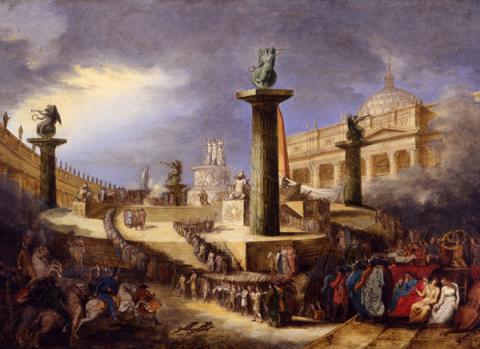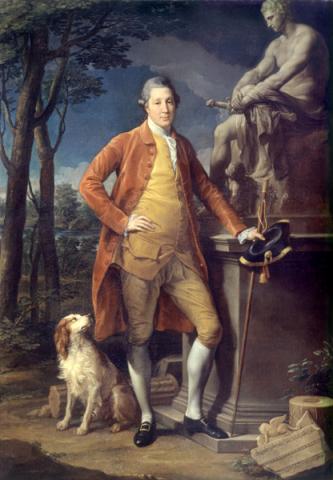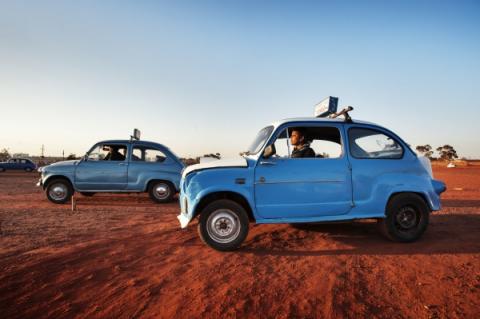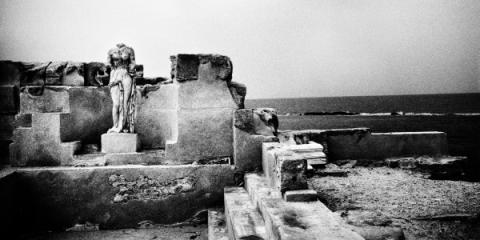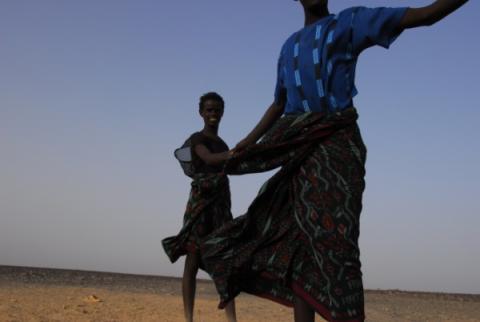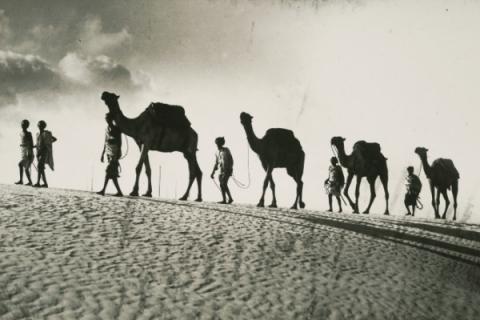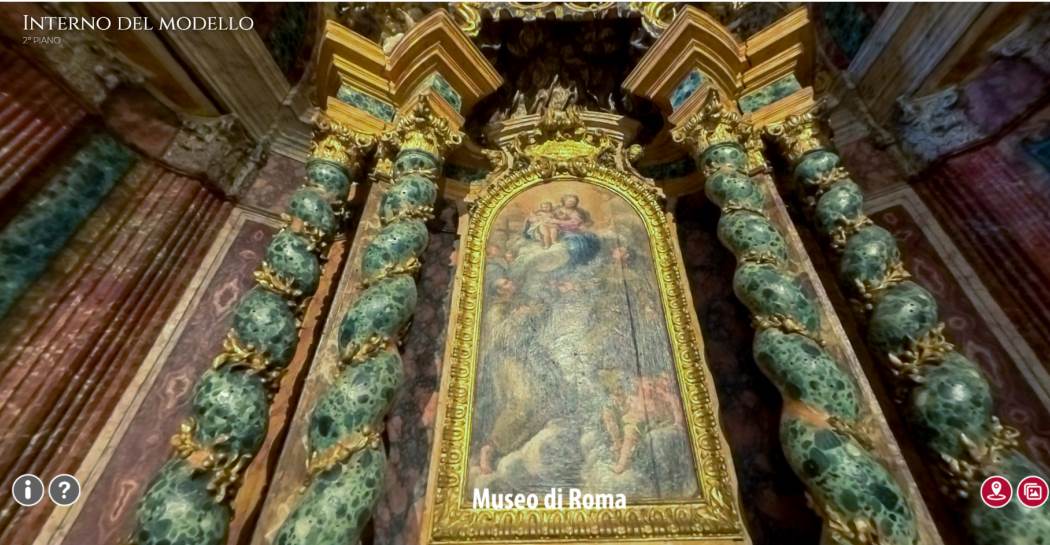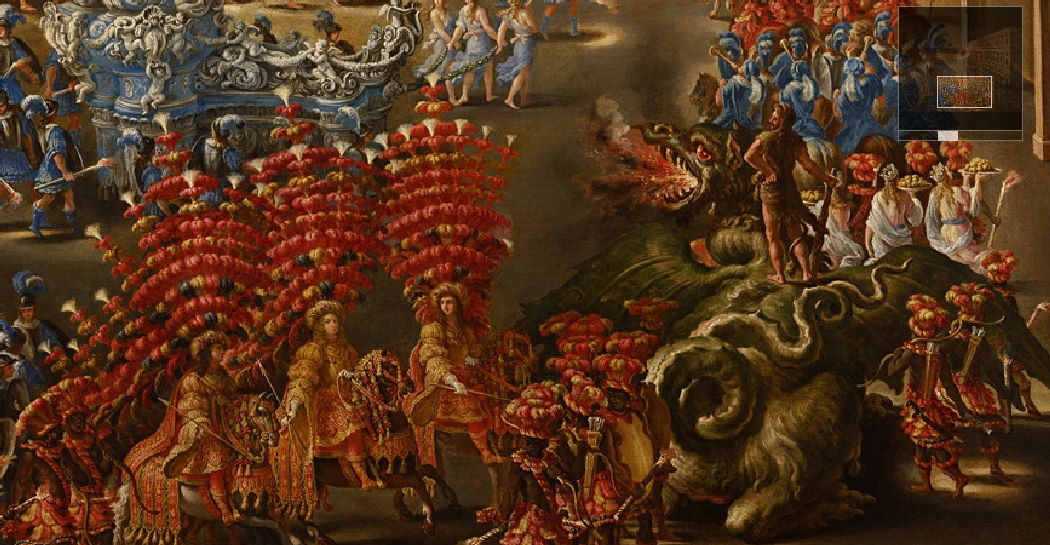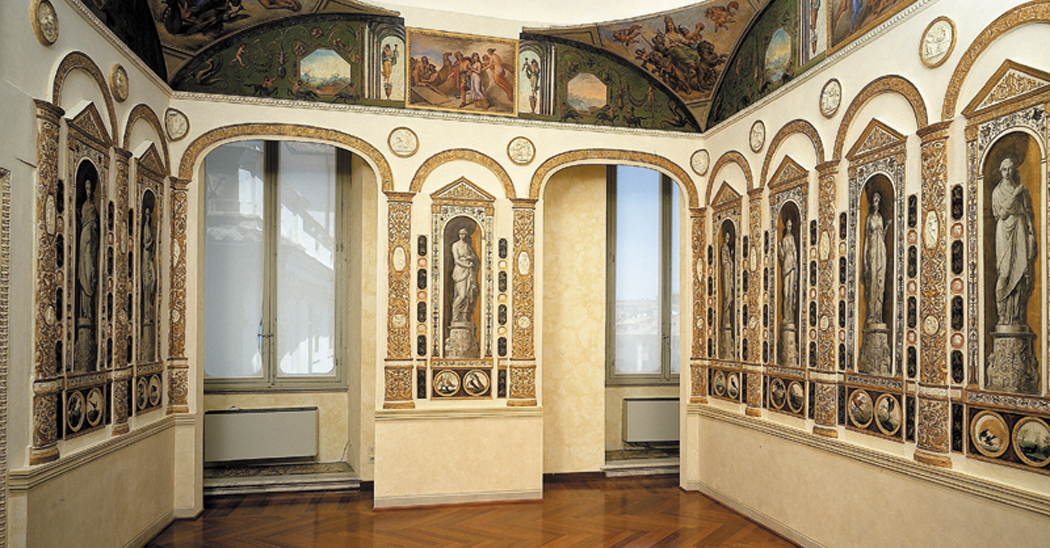Africa, Italy

Travels are passages, crossovers. At first travelling leaves you speechless, then it turns you into a storyteller, Ibn Battuta has written. The exhibition Africa, Italy puts two different types of travels together, in an Africa which once was Italian and has become stories, life pictures: in the daily normality of Eritrea (A Passage to Eritrea), along the paths of the explorers and inside the capital city (Crossing Ethiopia Today), in the Libyan sand in the footsteps of one's grandfather (Libya, the Captain and Me), setting out to conquer and discover lands and people (Somalia, Time Ago).
Beside coloured and black and white pictures (contemporary and old), materials from the archives of the Italian Geographical Society (ancient maps, books with magic formulas, travel notes, paintings of lions) and Eni (photos from yesterday and today) are on display. Video installations of various sizes and characteristics complement the mounting of the exhibition in some rooms, hosting different materials : exclusive video interviews with the Italian-Somali writers Ubah Cristina Ali Farah and Igiaba Scego; montages of moving images and sounds collected in travel; a collection of notes on Africa written by explorers, writers, historians, anthropologists.
The exhibition, promoted by Assessorato alla Cultura e al Turismo - Sovrintendenza Capitolina ai BeniCulturali di Roma Capitale, is a project realized by Travel Literature Festival - Italian Geographic Society. The 8th edition of the Festival, born in Rome in 2008, is programmed from 24th to 27th September 2015, with the usual schedule of meetings, exhibitions, performances, workshops, guided tours and events.
1. A PASSAGE TO ERITREA
by Antonio Politano
Eritrea has been an ancient love of mine since university. I had written an essay on its liberation war, one of my best friends was a member of the Popular Liberation Front. I have followed its history from far away. Then I had the opportunity to go there and cross the land as far as possible. And to try to understand, to stop, to give something back – on the occasion of the twentieth anniversary of its independence – on the pages of National Geographic. The opportunity to tell about some aspects of a young country which has come out of a thirty-year liberation war (the longest in the continent), with great hopes, which today lives in a suspended time, among the permanent emergency of an endless war with Ethiopia, the pride of going its own way, the desire for modernity, the struggle to get into a global world, the escape in search of freedom and chances, the tragic landings at the gate of Fortress Europe. A part of Italy (ex colonial power) in terms of cultural similarities, which is little known and has disappeared from our imagination. A journey between the highland and the Red Sea, from the capital Asmara, a unicum in the continent for its concentration of examples of historical architecture, to Massaua, the harbour-town half-destroyed by the bombings but which oozes with languor and beauty even from its rubble, as far as archipelagos of fossil coral, among steam trains, camel markets and fashion shows. With a sorrowful appendix of abandoned boats in some Mediterranean ports, by which those who hope migrate.
2. CROSSING ETHIOPIA TODAY
DANAKIL
by Andrea Semplici
The Italians, in colonial times, called by the name Dancalia the oriental fraction of the Afar region, a population spread across Ethiopia, Eritrea and Djibouti. They live in lonely villages made by household huts and sometimes they practice a circular nomadism, following the rains and the birth of rangelands. Dancalia is a salt and lava desert. 50 thousand kilometres, 10 thousands below sea level. Eastern Africa, in between the 15th and the 12th North parallel. On the border between Ethiopia and Eritrea, whom in 16 years have not yet found peace. Dancalia is the daughter of a geological cataclysm. Here the Rift Valley enters Africa and as a razor slices it in two. The earth magma roars 5 kilometres below our feet. It is a Vulcan dorsal. Here we can see the Earth palpitating, grumbling, creating an incredible beauty. Here we can assist the genesis of the planet. Dancalia is the antidote against any stereotype about Africa. Still during the early years of the XX century, Dancalia was a white spot in the African maps. Its exploration is mainly an Italian history. It was an Italian, Tullio Pastori, very young, during the beginning of ‘900, who first ventured in to the Salt Land. He managed to live in that land of nothing and became friend of the Afar for six decades. At the end of the ‘20s, Raimondo Franchetti and Ludovico Nesbitt, a very rich baron and an Italian-English engineer traversed Dancalia. It was a legendary feat. The two explorers became rivals, they wrote successful books, and competed for years in name of celebrity and glory. It was destiny which imposed itself a few months later, by ending their lives in a double airplane accident. Their story is a tableau of Italy in those years. And of the forgotten
history of Italians in Africa. Today, we are retracing the routes they drew.
ACROSS ADDIS
by Alice Falco and Romina Marani
Inside and outside the capital city, up to the Rift Valley lakes. Addis Ababa, universe-city in metamorphosis. Skyscrapers and dust roads, crosses and crescents, afro-pop and liturgical litanies. A passage during the Timkat - the Ethiopian Copt Epiphany - through parades, prayers, celebrations.
3. LIBYA, THE CAPTAIN AND ME
by Francesco Fossa
The desert cancels the space. So it happens that two visions, different for character and distant in time, can coexist and flow simultaneously parallel like in the photographer’s two hand work “Libya, the Captain and me (On the English Patient’s footprints)”. The pictures shot from 1933 to 1935, by a young Official of the Alpine troops in the Cufra Oasis and on the Auenàt uplands – a triangle contended for strategic reasons by the Italian and English among Libya, Egypt and Sudan- unchain the imagination of
the grandson: many years later he tries to go and visit those places to understand more about his grandfather, whom he has never met. A sand storm makes him withdraw towards westwards. And he - Francesco Fossa- plunges himself in another Libya, another desert, the Ubari and then the Maridhet which stretches along the Algerian border. Up to Gadames (the Tuaregs’ town) and the remains of the roman Sabrata. It is thanks to two researchers, expert in desert explorations that a new input will be
given to that project. The photographs of Lieutenant Manfredo Tarabini Castellani are of great historical value. Even the Hungarian explorer Laslo Almàzy (better known as the English Patient) writes about him in his travel journal. His name is found inside the English archives and in the secret reports of General Graziani: the intelligence operations, the archaeological findings and his chivalry gestures highlight a figure who died in 1940, too early, while fighting on the mountains of Albany, bearing the Captain ranks. Now grandfather and grandson are much closer than they were. With their photographic visions, different but in parallel.
4. SOMALIA, TIME AGO
Tales about places, cultures, people, stories are made of images, testimonies, objects, memories, voices.
Current ones, like those of two writers linked to Somalia: Ubah Cristina Ali Farah, born in Verona of Somali father and Italian mother, and Igiaba Scego, born in Rome of Somali parents. In a double videointerview they talk about identity, families, migrations, diaspora, generations, miscegenation, architectures, novels. In the archives of the Italian Geographical Society – established in 1867 with the aim of promoting culture, geographical knowledge and exploration, there are more than 400 volumes, a collection of maps of 150 thousand pieces, a photographic library of 300 thousand images. Somalia is represented in some iconographic series: the Filonardi collection records the Somalia of 1891; the photos of Lugh, general store on the Giuba, made by Carlo Citerni and Ugo Ferrandi during the second Bottego expedition in 1895-1897; the Stefanini-Puccioni mission of 1924. Besides, 2000 shots (negatives, positives, stereoscopic negatives) document the wanderings of Giotto Dainelli in Eastern Africa between the end of 1938 and the late spring of the following year on the occasion of the Geological Mission of AGIP in Somalia. Beside stories through images and words, various cartographic
documents describe the geography of those territories, acquired through centuries and passed on by means of the notebooks and maps of ancient explorers.
Information
28th February - 24th March 2015
From Tuesday to Sunday, 10 a.m. - 7 p.m.
Last admission 1 hour before closing time.
Monday closed
Please Note: please check our Notice page for special openings and/or temporary closures
unday, February 1, 2015 and Sunday, March 1, free admission for all citizens residing in Rome will be granted
Adults: € 11,00;
Concessions: € 9,00;
Roman Citizens only (by showing a valid ID):
- Adults: € 10,00;
- Concessions: € 8,00;
Infoline: +39 060608 (daily, from 9.00 to 21.00)


























